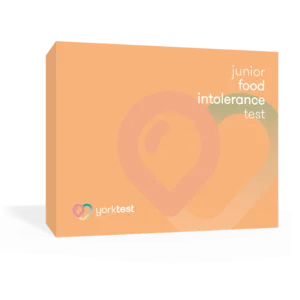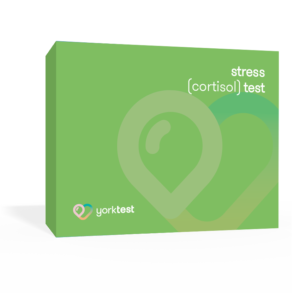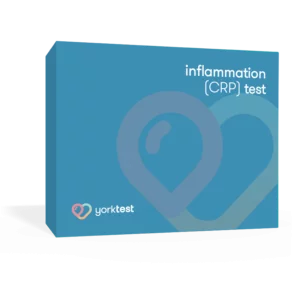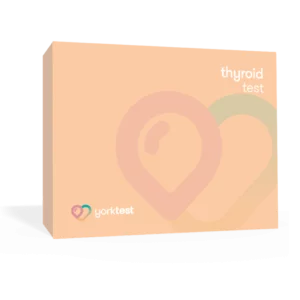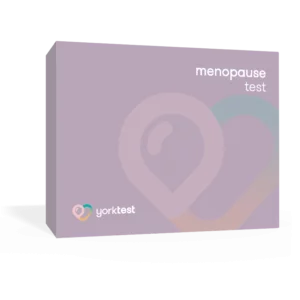- What is a Nightshade Allergy?
- What Causes Nightshade Allergies?
- What are Nightshades? A List of Foods
- Nightshade Intolerance vs. Allergy: Whatâs the Difference?
- Nightshade Intolerance
- Nightshade Allergy
- Symptoms of Nightshade Allergy and Intolerance
- Nightshade Allergy Symptoms
- Nightshade Intolerance Symptoms
- How to Test for Nightshade Intolerance and Allergy
- Nightshade Allergy Testing
- Can You Treat a Nightshade Allergy?
- How YorkTest Can Help
Nightshades are an integral part of the Solanaceae family which account for thousands of flowering plant species, including familiar foods like tomatoes, potatoes, eggplants, and bell peppers. These are common foods found in many meals around the world. However, consuming these foods can lead to uncomfortable reactions for some people. This issue is part of a larger conversation about nightshade allergies and sensitivities—a topic affecting many individuals looking to grasp how certain foods interact with their bodies.
Understanding the nuances of nightshade allergy and intolerance is vital if you feel you’re sensitive to such foods. But food intolerances like these can be complex, so it’s crucial to recognize why certain foods might make you feel unwell and why. For some individuals, it may be an immediate allergic reaction like a skin rash, but for others, the issue may persist as digestive discomfort.
As we dive into this subject around nightshade allergy and intolerance, remember: what’s on your plate plays a big role in how you feel each day. Knowledge is key to understanding your symptoms, what’s causing them, and how to effectively test and treat your condition. Let’s explore how nightshades fit into the puzzle of food sensitivities and how you can navigate life around these foods.
What is a Nightshade Allergy?
A nightshade allergy occurs when the body identifies certain compounds in nightshade plants as harmful, triggering an adverse immune response. This condition is considered rare but can significantly impact those affected, particularly individuals who have Inflammatory Bowel Disease (IBD) and Irritable Bowel Syndrome (IBS).[1]
Nightshades—a family of plants including widely consumed vegetables like tomatoes, potatoes, eggplants, bell peppers, and chili peppers—contain natural substances like alkaloids that most people can eat without issue. The term “nightshade” specifically refers to a subset of Solanaceae plants that contain higher levels of alkaloids like belladonna, datura, henbane, and mandrake. For those with a nightshade allergy, these substances prompt the immune system to react defensively, triggering a myriad of unpleasant symptoms.
This allergic reaction stems from the body’s misidentification of specific proteins found in nightshades as threats. Upon consumption of these foods, the immune system launches a protective attack against what it perceives as invaders. This involves releasing antibodies—specifically Immunoglobulin E (IgE)—to neutralize the supposed threat. The release of IgE triggers various cells in the body to produce histamine and other chemicals leading to an array of symptoms characteristic of allergic reactions.
What Causes Nightshade Allergies?
Nightshade allergies manifest due to a combination of natural plant compounds and individual genetic and health factors. Below are the specific causes and contributing elements:
- Presence of alkaloids: The primary trigger for nightshade allergies is alkaloids, which are naturally occurring compounds that nightshades produce to defend against pests and diseases. These include solanine, belladonna, datura, henbane, mandrake, nicotine, and capsaicin.
- Genetic predisposition: Variations in certain genes, like the BChE gene, may increase an individual’s susceptibility to developing a nightshade allergy. This genetic aspect means that some people might be more naturally inclined towards having allergic reactions to these plants.
- Autoimmune disorders: Individuals with autoimmune conditions often have immune systems that mistakenly attack healthy cells. This heightened state of immune sensitivity can make them more reactive to the alkaloids in nightshades.
- Gastrointestinal conditions: People suffering from gastrointestinal issues such as leaky gut syndrome face an increased risk for food-related intolerances including nightshade allergies because their compromised gut barrier allows larger particles into the bloodstream which should not normally pass through; this includes allergens found in foods.
Each of these factors contributes uniquely but significantly towards why someone might develop an allergy or sensitivity toward nightshades. These factors vary from inherent protective mechanisms within the plants themselves (alkaloids), personal health conditions affecting one’s immune response capability, and even our genetics dictating predispositions towards such adverse reactions.
Despite these factors, allergies to nightshades are considered quite rare. Nightshade intolerance, on the other hand, is more frequently observed. Unlike an allergy which involves an immune system reaction, an intolerance is often linked to digestive issues caused by the body’s inability to properly break down certain compounds in nightshade plants, like alkaloids.
What are Nightshades? A List of Foods
Nightshades are a fascinating group of plants that play a significant role in our diets. In addition to their nutritional value and the variety they bring to meals, nightshade derivatives are used in everyday medicines like pain relievers and anesthesia. However, these same foods can be problematic for some individuals due to alkaloid compounds which may trigger sensitivities or allergies.
The variety of nightshades covers a range of fruits, vegetables, herbs, spices, and seasonings. Here is a list of nightshade foods to be conscious about consuming.
Nightshade Vegetables:
- Potatoes (white and red, but not sweet potatoes)
- Eggplants
- Bell peppers
- Chili peppers (such as jalapeños, habaneros, etc.)
- Pimentos
- Red pepper
Nightshade Fruits:
- Tomatoes
- Goji berries
- Gooseberries
- Huckleberries
- Tomatillos
- Pepinos
- Naranjillas
- Tamarillos
Nightshade Spices and Seasonings:
- Paprika
- Cayenne pepper
- Chili powder
- Curry powder
- Garam masala
- Red pepper flakes
- Chinese five-spice powder
- Curry powder
Other Nightshade Plants and Herbs:
- Ashwagandha
- Belladonna
- Jimson weed
- Tobacco
As you can see by the list of foods classified as nightshades, avoidance presents a particular challenge among those allergic or intolerant to these foods. Being informed is an essential first place to start in managing such conditions.
Even though the nightshade family consists of edible and non-toxic plants, the term “deadly nightshade” has cultivated a notorious reputation around this category of plants due to the toxic and potentially lethal effects of particular nightshades.
The “deadly” designation refers specifically to highly poisonous nightshade species like belladonna, henbane, and mandrake, which have been used historically as poisons and for their psychoactive effects. This term distinguishes the highly toxic nightshade species from the many edible and non-toxic plants in the Solanaceae family.
Nightshade Intolerance vs. Allergy: What’s the Difference?
When it comes to adverse symptoms of nightshades, it’s essential to distinguish between a nightshade intolerance and a nightshade allergy. Although they may share some similarities in how they affect individuals, the underlying causes and treatments for these conditions are markedly different.
Nightshade Intolerance
A food intolerance to nightshades is digestive sensitivity where the body has difficulty properly processing the alkaloids in nightshade foods. This is primarily characterized by the body’s inability to fully digest nightshade foods due to a lack of necessary enzymes.
Unlike allergy symptoms that can manifest immediately, symptoms of nightshade intolerance unfold over time and are typically gastrointestinal, like gas, bloating, diarrhea, and heartburn. Intolerance can also be linked to underlying gut issues like leaky gut, but not necessarily tied to genetics or autoimmune factors.
Nightshade Allergy
A true food allergy to nightshades is where the immune system overreacts to the alkaloids in nightshade foods. The symptoms, which can flare up almost immediately, can include skin rashes, itchiness, wheezing, joint/muscle aches, brain fog, and even anaphylaxis in severe cases.
Nightshade allergy is often linked to genetic factors and autoimmune conditions that make the body more sensitive to nightshade alkaloids. In turn, such food allergies require strict avoidance of nightshade foods and potentially the use of medication like antihistamines or epinephrine auto-injectors. Diagnosis is most commonly carried out through skin prick tests or blood tests.
In simple terms, a nightshade allergy involves an immune system reaction, while a nightshade intolerance is a digestive issue. While both conditions can rear unpleasant symptoms, allergies can be severe and life-threatening, while intolerances cause uncomfortable but not as dangerous of symptoms.
Symptoms of Nightshade Allergy and Intolerance
Having a clear understanding of the symptoms of both nightshade allergy and intolerance can be pivotal in not just pinpointing but managing these conditions. Let’s break down the specifics:
Nightshade Allergy Symptoms
An allergic reaction to nightshades is an immune system response that can manifest through various symptoms across different parts of the body, including:
- Skin rashes or hives
- Itchiness (particularly around the mouth, throat, eyes, or on the skin)
- Swelling of lips, face, or tongue
- Respiratory problems such as wheezing or difficulty breathing
- Gastrointestinal issues like nausea or vomiting
- Joint pain and muscle aches
- Brain fog and fatigue
In severe cases, anaphylaxis can manifest. This serious condition includes symptoms like chest tightness, dizziness, fainting, and low blood pressure. These allergic reactions occur due to histamine and other chemicals released by the immune system trying to neutralize what it mistakenly perceives as harmful substances—the alkaloids found in nightshade foods.
Nightshade Intolerance Symptoms
Nightshade intolerance primarily affects the digestive system but can manifest in other discomforts as well. Individuals experiencing this sensitivity may encounter a range of gastrointestinal symptoms after consuming nightshades, including:
- Gas
- Bloating
- Diarrhea
- Heartburn
- Nausea
- Abdominal cramps
- Headaches or migraines
- Fatigue
Those affected by intolerance need to pay close attention to their body’s reactions, allowing them to make smart dietary adjustments aimed at minimizing discomfort and enhancing quality of life.
How to Test for Nightshade Intolerance and Allergy
Determining whether you’re dealing with a nightshade intolerance or allergy is crucial for adopting the appropriate dietary and lifestyle modifications. When testing for nightshade intolerance, certain food intolerance tests can pick up on IgG-mediated reactions that may be triggering your symptoms. However, these types of food sensitivity tests are not always the most conclusive, often requiring additional approaches to testing and management.
In addition to food-specific IgG tests, the most effective alternative method for nightshade intolerance testing involves an observational approach through diet modification known as an elimination diet.
- Elimination diet process: Initially, all nightshade foods are completely removed from your diet. This includes tomatoes, potatoes (except sweet potatoes), eggplants, peppers of all kinds (including paprika), tomatillos, goji berries, and ground cherries.
- Observation phase: After a period without these foods—usually several weeks—you’ll carefully monitor any changes in symptoms such as bloating gas, diarrhea, joint pain, etc. If there’s a noticeable improvement this suggests that you may have an intolerance
- Reintroduction phase: Subsequently, reintroduce nightshades back into your meals one at a time while continuing to observe the body’s reactions If symptoms previously dissipated return upon their reintroduction it strongly indicates the presence of sensitivity toward these plants.
This process not only helps identify intolerances but also can pinpoint which specific types of nightshades might be causing discomfort allowing more tailored adjustments moving forward
Nightshade Allergy Testing
For those suspecting a nightshade allergy, the approach involves medical testing to detect an immune system response. Conducted under the guidance of healthcare professionals, these tests are designed to identify allergic reactions specifically to proteins found in nightshades. The most common diagnostic methods include:
- Blood tests: This test involves analyzing a blood sample for the presence of Immunoglobulin E (IgE) antibodies that react against nightshade proteins. With an IgE blood test, a positive result indicates an immune reaction and, consequently, an allergy. Blood allergy testing is generally accurate and accessible among those sensitive to nightshade plants.
- Skin prick tests: In this procedure, a small amount of nightshade extract is placed on your skin which is then lightly pricked or scratched. The area is observed for signs of a reaction such as swelling or redness; any indication suggests sensitivity to these foods. However, the amount of histamine present in nightshades like eggplant can dilute the test results in skin prick testing, making blood tests a more preferred method.[2]
These medical evaluations help differentiate between simple digestive issues associated with intolerance and more severe immunological responses characteristic of allergies. Given the serious nature of some allergic reactions—particularly the risk of anaphylaxis—it’s crucial to undergo testing if you believe you have a nightshade allergy.
Understanding whether you’re dealing with an intolerance or an allergy is key, as it dictates the approach toward managing your dietary choices. By accurately distinguishing between these conditions through careful observation and professional testing, individuals can make informed decisions that significantly improve their health and quality of life.
Can You Treat a Nightshade Allergy?
Managing a nightshade allergy involves both preventive measures and treatments to address symptoms when they occur. Unlike intolerances, where dietary adjustments might suffice, allergies require a more comprehensive approach due to the potential severity of reactions.
Preventive measures: The cornerstone of managing a nightshade allergy is avoiding foods within this group altogether. This means eliminating tomatoes, potatoes (except sweet potatoes), eggplants, peppers (including bell peppers, chili peppers, and paprika), tomatillos, goji berries, and ground cherries from your diet. While avoidance can seem daunting given the prevalence of these ingredients, knowledge and proper planning can help you navigate dietary restrictions more successfully while minimizing the risk of exposure
Symptom management: For times when exposure does happen or if minor symptoms arise despite careful avoidance various medications available help manage discomfort These include:
- Antihistamines: Medications such as Zyrtec and Claritin can be taken to alleviate common allergy symptoms. These work by blocking the action of histamine, which is produced as part of the body’s allergic response, thereby reducing symptoms like hives, sneezing, and itchiness.
- Decongestants: Useful for clearing nasal congestion; these medications help open up nasal passages making it easier to breathe when allergies affect the respiratory system.
- Steroid nasal sprays: To combat inflammation in the nasal passages—which contributes to swelling and difficulty breathing—steroid nasal sprays can provide significant relief.
- Epinephrine auto-injectors (EpiPens): In cases where there’s a risk of severe reactions such as anaphylaxis; having an epinephrine auto-injector readily available is critical. This emergency treatment quickly counters life-threatening symptoms and should be used immediately while seeking medical attention.
Incorporating these measures into your allergy management plan helps to ensure you can effectively mitigate your symptoms and reduce discomfort during allergic episodes. Recognizing signs early on and knowing how to use these treatments correctly forms an essential part of living safely with a nightshade allergy.
With nightshade intolerance, there are no immediate treatments other than management strategies designed to eliminate nightshade foods from the diet and see if symptoms improve. In other words, medications are not typically used to treat nightshade intolerance, as it is not an immune system reaction. Instead, an elimination diet is the best way to identify trigger foods and manage nightshade intolerance symptoms.
How YorkTest Can Help
Navigating the complexities of nightshade intolerance and allergies can be daunting, but YorkTest offers comprehensive solutions tailored to assist you in identifying and managing these conditions. If you suspect you have a nightshade intolerance, YorkTest’s food intolerance test is an invaluable tool. This simple blood test provides an easy way to test sensitivity across hundreds of unique foods.
By detecting IgG antibody reactions specific to nightshade foods such as tomatoes, potatoes, and peppers, these tests pinpoint exactly which items may be causing adverse reactions. Armed with this knowledge, individuals can undertake an elimination diet with precision—removing only the problematic foods rather than guessing which might be the culprits.
Similarly, YorkTest’s food allergy test measures your IgE reactivity to over 40 common allergens. This finger-prick blood test helps you understand your body’s immune response when an allergic reaction occurs with certain foods. All of YorkTest’s products are at-home testing kits that are conveniently mailed for analysis and provide 98% repeatable accuracy.
Scientific References:
- Kuang R, Levinthal DJ, Ghaffari AA, Del Aguila de Rivers CR, Tansel A, Binion DG. Nightshade Vegetables: A Dietary Trigger for Worsening Inflammatory Bowel Disease and Irritable Bowel Syndrome? Dig Dis Sci. 2023 Jul;68(7):2853-2860. doi: 10.1007/s10620-023-07955-9. Epub 2023 May 19. PMID: 37202602.
- Kumar MN, Babu BN, Venkatesh YP. Higher histamine sensitivity in non-atopic subjects by skin prick test may result in misdiagnosis of eggplant allergy. Immunol Invest. 2009;38(1):93-103. doi: 10.1080/08820130802608295. PMID: 19172488.



